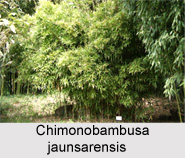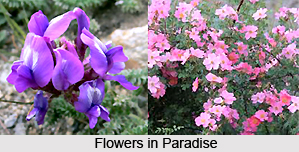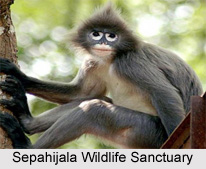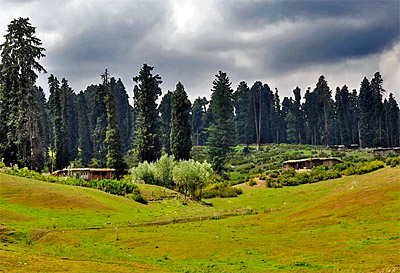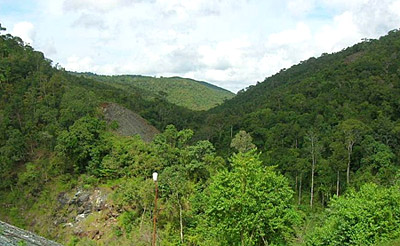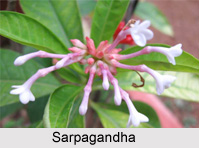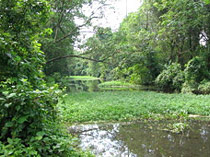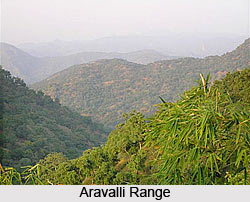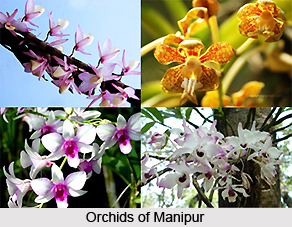Introduction
The Jim Corbett national Park, being located in the laps of
majestic Himalayan
terrains, has a rich heritage behind it. Formerly, it was the primary
hunting ground for the British officials. In the year 1936, The Jim Corbett
National Park was established. It was developed and nourished by Late Jim Corbett. In the
beginning it was known as the Hailey National Park. Afterwards, the park got
the name, Jim Corbett National Park. Jim Corbett Tiger Reserve is
an integral part of it and soon became one of the tiger reserves in the country
with the launch of the Project Tiger
scheme by the then union minister, Dr. Karan Singh.
Jim Corbett National Park has an aura beset by the snow-
clad peaks of Shivalik
Himalayan Ranges. It also constitutes of the terrain, or marshy alluvial
plains, and also the bhabar. Bhahar is thickly forested fertile landscapes with
a raising height of 600 m from the Terrain region. The reserve has a total
height ranging from four hundred to one thousand and two hundred meters. The
hills, river valleys, open plateaus and plateaus display distinct vegetation.
This 201 square miles park is known for the large population of tigers,
leopards and elephants.
History of Jim Corbett National Park
Originally established as Hailey National Park, the reserve was later renamed in honor of Jim Corbett, a renowned conservationist and naturalist best known for hunting man-eating tigers in Uttarakhand’s Kumaon region between 1907 and 1939. Despite his background as a hunter, Corbett was a strong advocate for wildlife conservation, particularly for tigers. This commitment to preservation made Jim Corbett National Park the fitting choice to inaugurate India’s ‘Save the Tigers’ initiative. Launched in 1973, Project Tiger aimed to maintain ecological balance, protect existing ecosystems, and foster harmony between humans and wildlife, especially in national parks and sanctuaries. Beyond conservation, the project also seeks to raise environmental awareness and promote practical efforts toward preservation.
Area of Jim Corbett National Park
Covering an area of 1,288 sq. km, Corbett Tiger Reserve
spans the districts of Nainital and Pauri in Uttarakhand,
incorporating the Sonanadi Wildlife Sanctuary and adjoining reserve forests
within its expanse. The reserve boasts a rich biodiversity, featuring over 110
tree species, 580 bird species, 50 mammal species, and 25 reptile species. With
a wide range of streams, rivers, and ridges, the forested area provides an
ideal habitat for diverse flora and fauna. Among its most notable inhabitants
are the Bengal
tigers, Asiatic elephants, leopards, wild boars,
sloth bears, jackals, mongooses, and crocodiles.
Flora in Jim Corbett National Park
Nestled in the hills of Uttarakhand, Jim Corbett National Park is home to a diverse range of flora, boasting over 600 species of trees, shrubs, herbs, and flowering plants. The park’s dense moist deciduous forests are dominated by prominent species such as Sal, Khair, Sissoo, Peepal, Rohini, Mango, and the coniferous Chir Pine. In addition, the park features vibrant flowering plants, including Amaltas, Semal, Haldu, Kachnar, Eucalyptus, Jacaranda, and Bamboo. Shrubs like Ber and Maror Phali also thrive here, serving as essential fodder for the park’s herbivorous wildlife.
Key Flora of Jim Corbett Tiger Reserve
Sal Tree: As the dominant tree species, Sal covers
nearly 40% of the park’s forest area. This deciduous tree grows up to 20–25
meters in height, with large, leathery leaves. Known for its medicinal
properties, its resin, seeds, and fruits are widely used in traditional
remedies. The Sal tree
sheds its leaves in February and March, with fresh foliage emerging in April.
Its flowers produce fruits between June and July.
Sissoo Tree: Commonly known as Sheesham, the Sissoo tree is another major species in Jim Corbett. A medium-to-large tree, it reaches heights of 10–15 meters, often with a distinct curved trunk. Its pointed leaves grow in clusters of five, while its pale-colored flowers give way to fruit resembling pea pods.
Chir Pine: A native species of the Himalayan region,
the Chir Pine is a towering evergreen found in the park. This coniferous tree
can grow beyond 30 meters, with a trunk diameter of up to 2 meters. Its
slender, needle-like leaves grow in sets of three, reaching lengths of 25–30
cm. The tree flowers between February and April, later producing pine cones
that transition from green to brown.
Amaltas: Easily recognizable by its striking yellow flowers, the Amaltas tree grows to heights of 10–20 meters. Its long, cascading clusters of five-petaled flowers bloom in full glory during the summer months of May and June, adding a vibrant touch to the park’s landscape.
Semal: Semal is a visually striking tree,
distinguished by its brilliant red flowers that bloom between March and April.
It can grow up to 20 meters tall, with fruits that burst open in May, releasing
cotton-like fibers. These fibers, apart from enhancing the tree’s aesthetic
appeal, are commonly used as fillers for quilts and pillows.
Fauna in Jim Corbett National Park
The Jim Corbett National Park is home to the most valued wildlife in India. Apart from the Bengal Tigers and Elephants, the wildlife in the Jim Corbett National Park includes Himalayan Palm Civet, Indian Gray Mongoose, Common Otter, Blacknaped Hare and Porcupine. Besides the huge herds of Asian elephants, one can also find the two types of crocodiles - Gharial and Mugger - on the muddy banks of Ramganga River. The leopards are generally seen in the hilly terrains of the National Park. The national park also consists of the various reptiles. These are namely Leopard Cat, Jungle Cat and Fishing Cat. The Dole or Wild Dog and Jackal are seen in the southern territories of the national park.
The Langur and Rhesus Monkeys are also quite common in the Jim
Corbett national park. In Jim Corbett National Park birds including raptures
and also tiny singing birds can be seen. There are more than five hundred
species of birds that are available here. Osprey, Pallas`s Fish Eagle, Lesser
Fish Eagle, Black Eagle, Mountain Hawk Eagle, Crested Serpent Eagle,
Rufous-bellied Eagle, Crested Goshawk, Hen Harrier, Lesser Spotted Eagle. Brown
Fish Owl, Brown Hawk Owl, and Spot-bellied Eagle Owl are illustrious examples
of bird raptures. The whole park is filed with the mesmerizing voices of birds.
These include Red Junglefowl,
Kalij Pheasant,
Black Francolin, Great Hornbill,
Oriental Pied Hornbill, Greater Yellownape, Great Slaty Woodpecker,
Blue-throated Barbet, Blue-bearded Bee-eater, Chestnut-headed Bee-eater,
Dollarbird, Lesser Racket-tailed Drongo, Greater
Racket-tailed Drongo, Spangled Drongo, Maroon Oriole, Orange-bellied Leafbird,
white-crested Laughingthrush.
Along the riverside no can ignore the presence of birds like the Black-necked Stork, Black Stork, Darter, Great
Cormorant, Common
Merganserand Crested Kingfisher.
Tourism in Jim Corbett National Park
From November to June, Jim Corbett National Park welcomes
tourists from around the world, as this period is considered the best time to
visit. During these months, visitors can experience India's diverse wildlife
through jungle safaris across five tourism zones: Dhikala, Bijrani, Domunda,
Jhirna, and Sonanadi. Beyond safaris, the park offers thrilling adventure
activities such as rock climbing, rappelling, river crossing, and slithering,
organized by nearby hotels and resorts. After exploring the park’s wilderness,
visitors can also explore nearby attractions, including Garjia Temple, Kyari
Camp, Sitabani Temple, Sitabani Forest Reserve, Bijrani, Dhangari Museum,
Corbett Waterfalls, and Sunrise Point.
Wildlife Safaris in Jim Corbett National Park
Wildlife safaris in Corbett National Park offer an immersive experience, taking visitors deep into the forest to observe animals in their natural habitat. Corbett is now home to an estimated 260 tigers, the highest among all tiger reserves in India. This makes it a prime destination for wildlife enthusiasts eager to catch a glimpse of the majestic big cat in its natural surroundings. As the only way to explore the park, these safaris are conducted in designated zones using authorized gypsies, elephants, and canters, as private vehicles are not permitted. Popular safari zones include Jhirna, Bijrani, Durga Devi, and Dhikala, with mandatory entry registrations required at the respective gates before access.
Beyond tigers, the park’s jungle safaris offer a chance to
witness a diverse range of wildlife, including leopards, elephants, sloth
bears, Asiatic black bears, gharials, and several deer species such as barking
deer, sambar, and chital.
